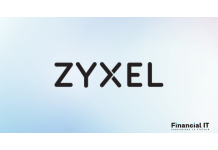Zyxel Networks Introduces Pay as You Go Billing on...
- 01.09.2025 02:05 pm
Ecommpay Named as a Finalist in Nine 2025 Payments...
- 01.09.2025 12:15 pm
dLocal and Cleeng Power Digital Subscription Growth...
- 29.08.2025 04:05 pm
Sightline Payments Partners With Cross River to...
- 29.08.2025 01:05 pm
Zelle® Launches "When It Counts" Brand...
- 29.08.2025 12:55 pm
Green Dot and rapid! Pay Join Workday Partner Program...
- 29.08.2025 11:45 am
Run Payments Launches Run Merchant: Unifying Payments...
- 29.08.2025 09:45 am
Bitso Business Announces Expansion to New Markets and...
- 29.08.2025 08:35 am
Mastercard and Infosys Collaborate to Scale Cross-...
- 28.08.2025 03:05 pm
Moca Network Partners with Spree Finance and BookIt....
- 28.08.2025 02:05 pm
Central Bank of Barbados Selects Montran to Power...
- 28.08.2025 11:45 am
Chase Supports Customers with Transition to Direct...
- 28.08.2025 11:25 am






















